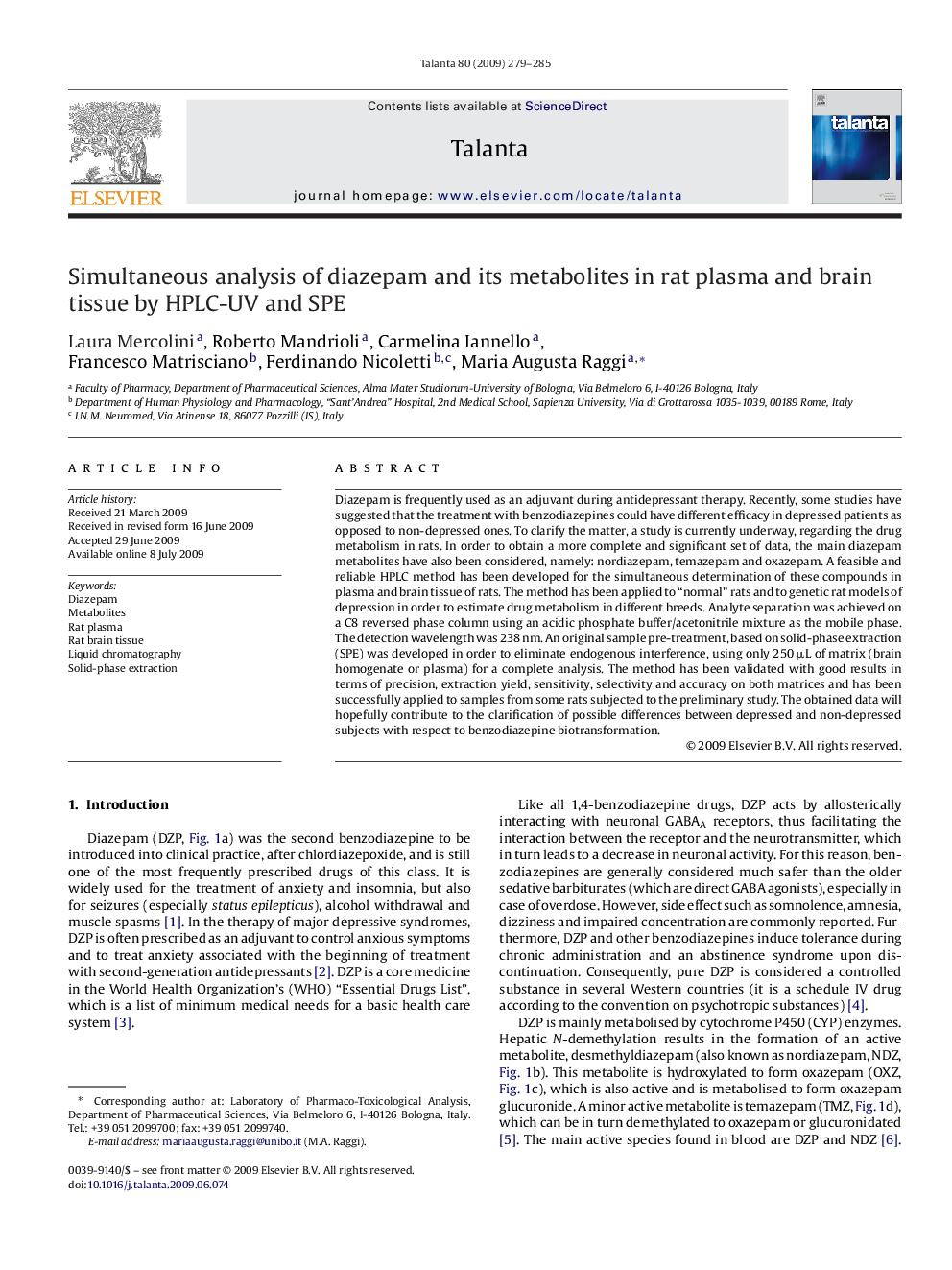| Article ID | Journal | Published Year | Pages | File Type |
|---|---|---|---|---|
| 1243679 | Talanta | 2009 | 7 Pages |
Diazepam is frequently used as an adjuvant during antidepressant therapy. Recently, some studies have suggested that the treatment with benzodiazepines could have different efficacy in depressed patients as opposed to non-depressed ones. To clarify the matter, a study is currently underway, regarding the drug metabolism in rats. In order to obtain a more complete and significant set of data, the main diazepam metabolites have also been considered, namely: nordiazepam, temazepam and oxazepam. A feasible and reliable HPLC method has been developed for the simultaneous determination of these compounds in plasma and brain tissue of rats. The method has been applied to “normal” rats and to genetic rat models of depression in order to estimate drug metabolism in different breeds. Analyte separation was achieved on a C8 reversed phase column using an acidic phosphate buffer/acetonitrile mixture as the mobile phase. The detection wavelength was 238 nm. An original sample pre-treatment, based on solid-phase extraction (SPE) was developed in order to eliminate endogenous interference, using only 250 μL of matrix (brain homogenate or plasma) for a complete analysis. The method has been validated with good results in terms of precision, extraction yield, sensitivity, selectivity and accuracy on both matrices and has been successfully applied to samples from some rats subjected to the preliminary study. The obtained data will hopefully contribute to the clarification of possible differences between depressed and non-depressed subjects with respect to benzodiazepine biotransformation.
